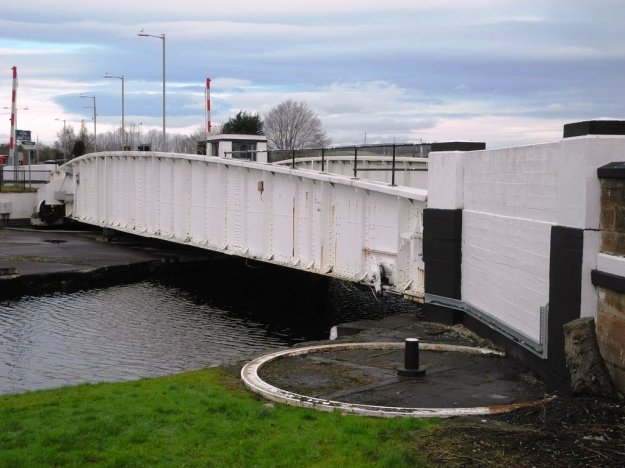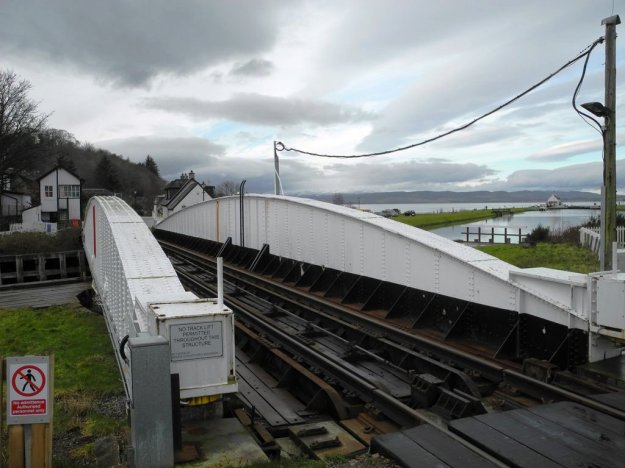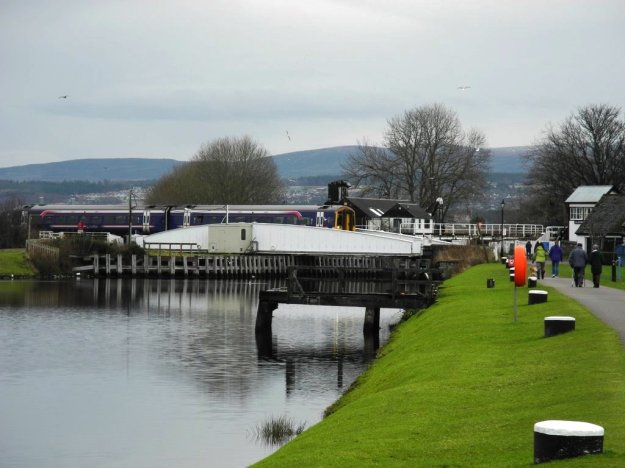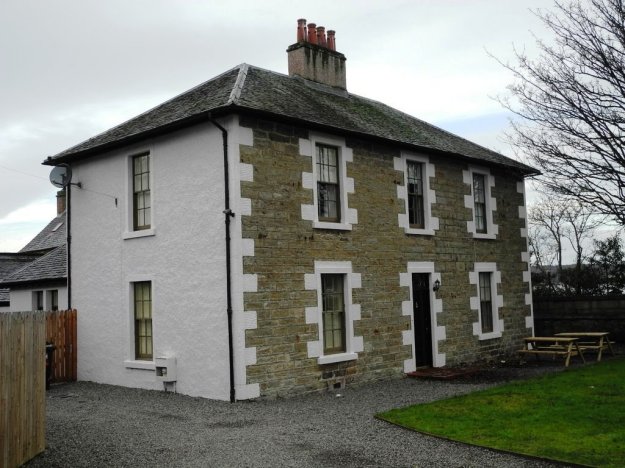by Bob Jones (NOSAS)
Introduction
These notes were compiled in preparation for a NOSAS winter walk which combined a visit to features of the Caledonian Canal at Muirtown and Clachnaharry and to the hillfort at Craig Phadrig.
A slightly different route was followed when the walk was repeated for the NOSAS 20 Year Celebration weekend in March 2018. You can find the notes for this here.
Information has been derived in the main from easily accessible online sources, especially Canmore. The book “The Caledonian Canal” by A D Cameron published by Birlinn Ltd has also proved very useful. It was originally published in 1972, but the 2005 edition includes much updated information.
Rather than attempting to produce an extensive document, the notes have been kept very brief, but links to source material have been included. These, especially the Canmore links, include many photos.
Especially recommended are two BBC audio items (Scot II and the WWI mine barrage) and a history of the Scot II (Leith Shipyards).
Not to be missed is the US Navy book detailing the story of the WWI mine barrage.
Notes on canal features
‘Telford it was by whose presiding mind the whole great work was planned and perfected.’
…… or was it really Jessop?
The Canal was authorised by Parliament in 1803, and was begun under Thomas Telford as principal engineer with William Jessop as consultant. (See Cameron, The Caledonian Canal pp 167-172 for more information)
Construction of the stretch including Muirtown locks and basin and the terminal works at Clachnaharry was delayed by difficulties in building the sea lock and the canal did not open until 1822.
https://canmore.org.uk/site/105851/inverness-caledonian-canal-clachnaharry
https://en.wikipedia.org/wiki/Caledonian_Canal
Muirtown swing bridge & control cabin
The current swing bridge was built in 1935 and was operated electrically from the control cabin, with the backup option of manual control. The 1935 road gates have been replaced by automatic barriers and the bridge is now operated by hand held remote control.
Traces of earlier swing bridges are visible alongside the current bridge.
https://canmore.org.uk/site/68585/inverness-caledonian-canal-muirtown-swing-bridge-and-control-cabin
https://canmore.org.uk/site/330076/inverness-caledonian-canal-muirtown-swing-bridge
Muirtown locks
The flight of four locks, each 180 ft long and 40 ft wide raises the canal 32 ft from the basin at Muirtown to the Dochfour reach. They were built by Simpson & Cargill from 1808–13.
https://canmore.org.uk/site/13331/inverness-caledonian-canal-muirtown-locks
Scot II ticket office & goods sheds
The building was used by MacBraynes as offices and as a passenger terminus for the Scot II which was built as an ice breaking tug in 1931 and operated passenger cruises on Loch Ness from 1961 to 1991. Other features of note are the goods sheds, crane and crab winch.
Scot II ticket office:
https://canmore.org.uk/site/297645/inverness-canal-road-muirtown-locks-shed
Goods shed:
https://canmore.org.uk/site/180618/inverness-muirtown-locks-upper-wharf-warehouse
Scot II:
http://www.bbc.co.uk/news/uk-scotland-12464421
Crab winch & hand crane:
https://canmore.org.uk/site/297919/caledonian-canal-inverness-muirtown-locks-crab-winch
https://canmore.org.uk/site/13332/caledonian-canal-muirtown-locks-inverness-handcrane
Lock keeper’s cottages
Probably built as a pair of lock keeper’s cottages, but not as part of the original canal construction. Until recently the building operated as the Caley Inn.
https://canmore.org.uk/site/87207/caledonian-canal-inverness-muirtown-locks-lock-keepers-cottage
Glenmhor Distillery
Along with Millburn and Glenalbyn, the Glenmhor Distillery was one of three Inverness distilleries all of which closed down in 1982.
https://canmore.org.uk/site/68586/inverness-muirtown-telford-street-glenmhor-distillery
Caledonian FC
The former football ground is now occupied by retail premises. Amid much acrimony Caledonian FC and Inverness Thistle FC merged to form Inverness Caledonian Thistle FC.
http://www.caledonianfc.co.uk/index1.html
Glenalbyn Distillery
https://canmore.org.uk/site/68588/inverness-telford-street-glenalbyn-distillery
US Naval Base 18 : WWI mine preparation
In 1917, the American navy transformed what was then Glen Albyn distillery into a factory where mines could be assembled.
The mines were ferried out to the North Sea to form the Northern Barrage, a bold plan undertaken jointly by the US and British navies. By the conclusion of war, the American and British navies had laid over seventy thousand mines along the 250 miles of the North Sea between Orkney and Norway.
This is a facsimile US Navy book detailing the mine barrage operation. It includes a large number of photos: http://library.si.edu/digital-library/book/northernbarragem00annapol
A 5 minute audio account of the events in Inverness: http://www.bbc.co.uk/programmes/p0224vgk
RCAHMS/HS WWI project report: https://canmore.org.uk/event/963158
A detailed entry including technical details: https://en.wikipedia.org/wiki/North_Sea_Mine_Barrage
Canal branch railway
This branch line to the canal is clearly marked on the 2nd edition of the OS 6-inch map and the track is still visible on the current edition of the 1:10000 map (1992).
https://canmore.org.uk/site/187793/inverness-caledonian-canal-branch-railway-muirtown-basin
Rail swing bridge
The original bridge was designed by Joseph Mitchell, completed in 1862 and rebuilt in 1909. It is painted white to limit temperature effects.
https://canmore.org.uk/site/13483/inverness-caledonian-canal-clachnaharry-railway-swing-bridge
Sea lock & basin
Clachnaharry basin was constructed by building 2 banks into the sea. The sea lock was constructed by building an artificial peninsula and then excavating a lock within it.
https://canmore.org.uk/site/87203/inverness-caledonian-canal-clachnaharry-sea-lock-basin
Canal workshops & smithy
The Canal Workshops date from c. 1850. This was the site from where initial construction of the Muirtown Basin was co-ordinated.
https://canmore.org.uk/site/13476/inverness-caledonian-canal-clachnaharry-lock-canal-workshops
Dunolly House
The house was bought by the Caledonian Canal Commissioners prior to the construction of the canal. The ground floor was used as offices and Thomas Telford stayed in the upper floor rooms during his brief visits overseeing the construction of the canal.
https://canmore.org.uk/site/98324/inverness-clachnaharry-clachnaharry-road-dunolly
The NOSAS walk then continued through Clachnaharry village and up to Craig Phadrig (a post on Craig Phadrig hillfort is forthcoming).





















I am trying to identify the location for a photo I have from April 23, 1919 which shows two US Submarine Chasers moored along the canal. the railroad across the canal. I can send a copy of the photo with deck long comments if I have an email address. Thanks, Kathryn
LikeLike